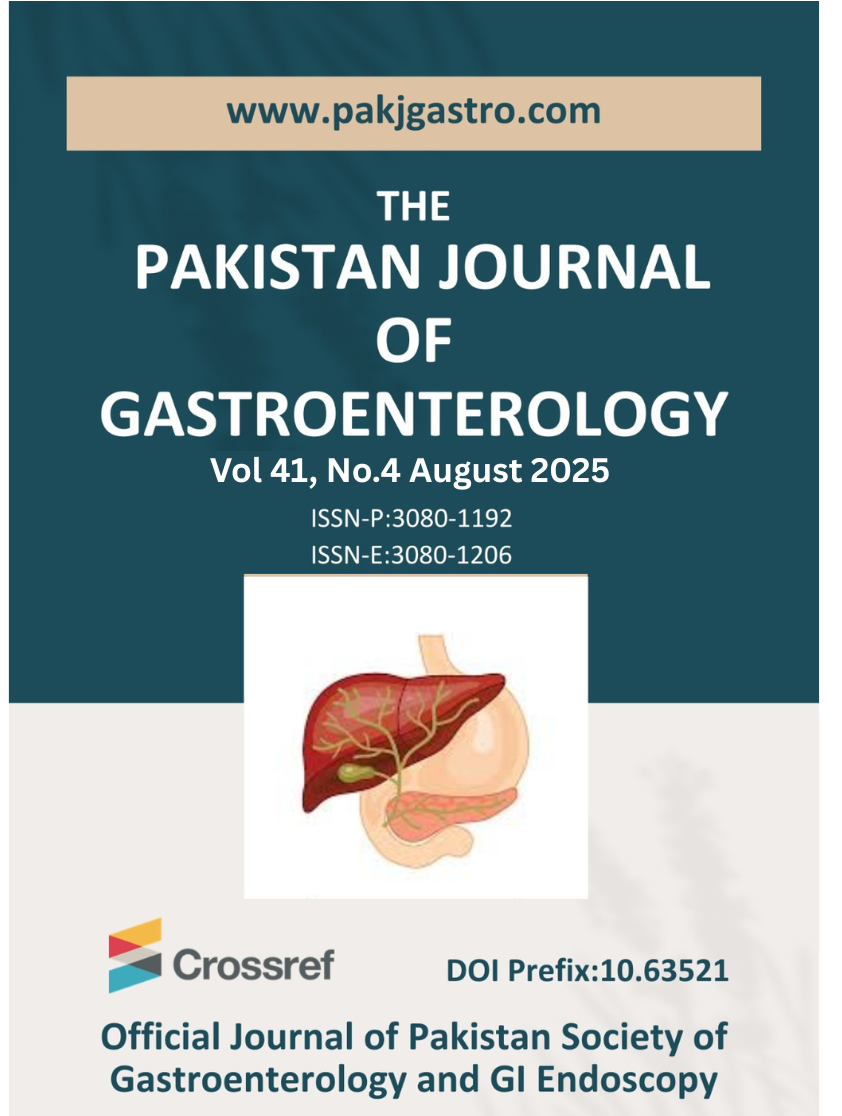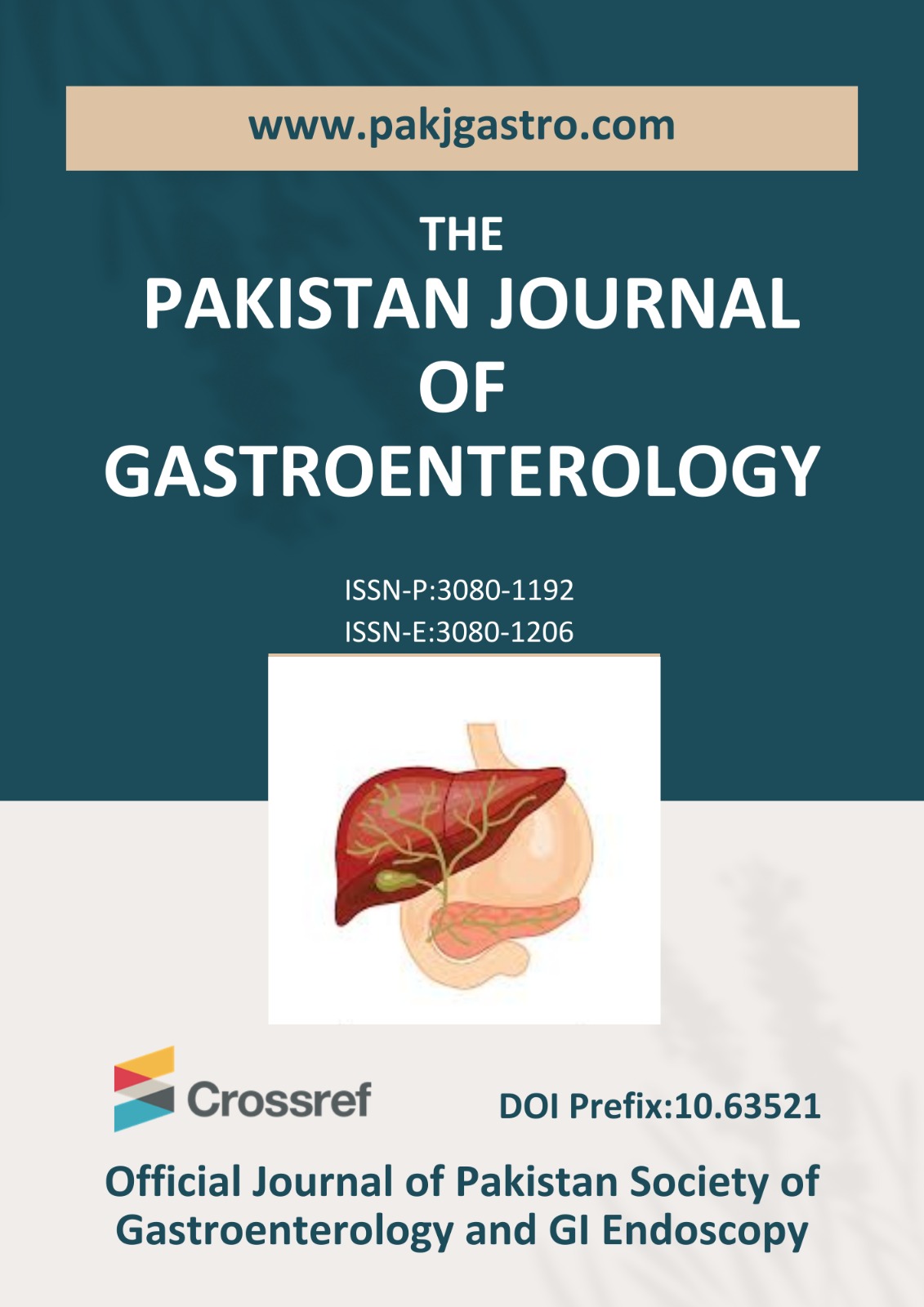Relationship between Upper GI symptoms and Endoscopic findings with Gastric H Pylori density.
DOI:
https://doi.org/10.63521/pjg.41.4.2025.21Keywords:
Endoscopy , H pylori, Esophagitis, Gastritis, DuodenitisAbstract
Objective: Helicobacter pylori affects many individuals in developed and developing countries. Inflammation caused by H pylori differs depending on the virulence factors, bacterial density and host response of bacteria. This study is designed to investigate the association between density of H Pylori colonization in gastric mucosa in biopsy specimens and severity of gastric mucosal inflammation.
Methods: This study of 75 patients was done at Department of Gastroenterology, Ghurki Trust Teaching Hospital Lahore. These patients presented with GI symptoms and got endoscopy done between June 2023 to June 2024. Their histopathology reports were retrospectively screened and severity of inflammation and H Pylori density were analyzed by Sydney scoring. Data analysis was done using SPSS software version 24.
Results: The analysis of H. pylori density and its association with gastrointestinal symptoms and endoscopic findings reveals that most gastrointestinal symptoms, including epigastric pain, nausea, and retrosternal burning, show no significant association with H. pylori density. On endoscopy findings evaluation only esophagitis is associated with higher H. pylori densities (p < 0.001), indicating a potential link between the bacterium and this condition. Other findings, such as moderate gastritis and duodenitis, show trends toward association but are not statistically significant.
Conclusion: Our study shows that density of H Pylori infection has no influence over Upper GI symptoms and also endoscopic findings cannot be taken as evidence of H pylori infection.
Downloads
Published
Issue
Section
License
Copyright (c) 2025 Asia Mehmood (Author)

This work is licensed under a Creative Commons Attribution 4.0 International License.
Submission declaration
Authors retain the copyright to their work and grant the Pakistan Journal of Gastroenterology (PJG) the right of first publication under a Creative Commons Attribution 4.0 International (CC BY 4.0) license. This license allows others to share, adapt, and reuse the work for any purpose, including commercial use, as long as appropriate credit is given to the original authors and the journal.
By submitting a manuscript, authors confirm that the work has not been published previously (except as an abstract, lecture, or academic thesis), is not under review elsewhere, and has been approved by all authors and relevant authorities. Once accepted, the article will be openly accessible under the CC BY 4.0 license, ensuring wide dissemination and reuse with proper attribution.









